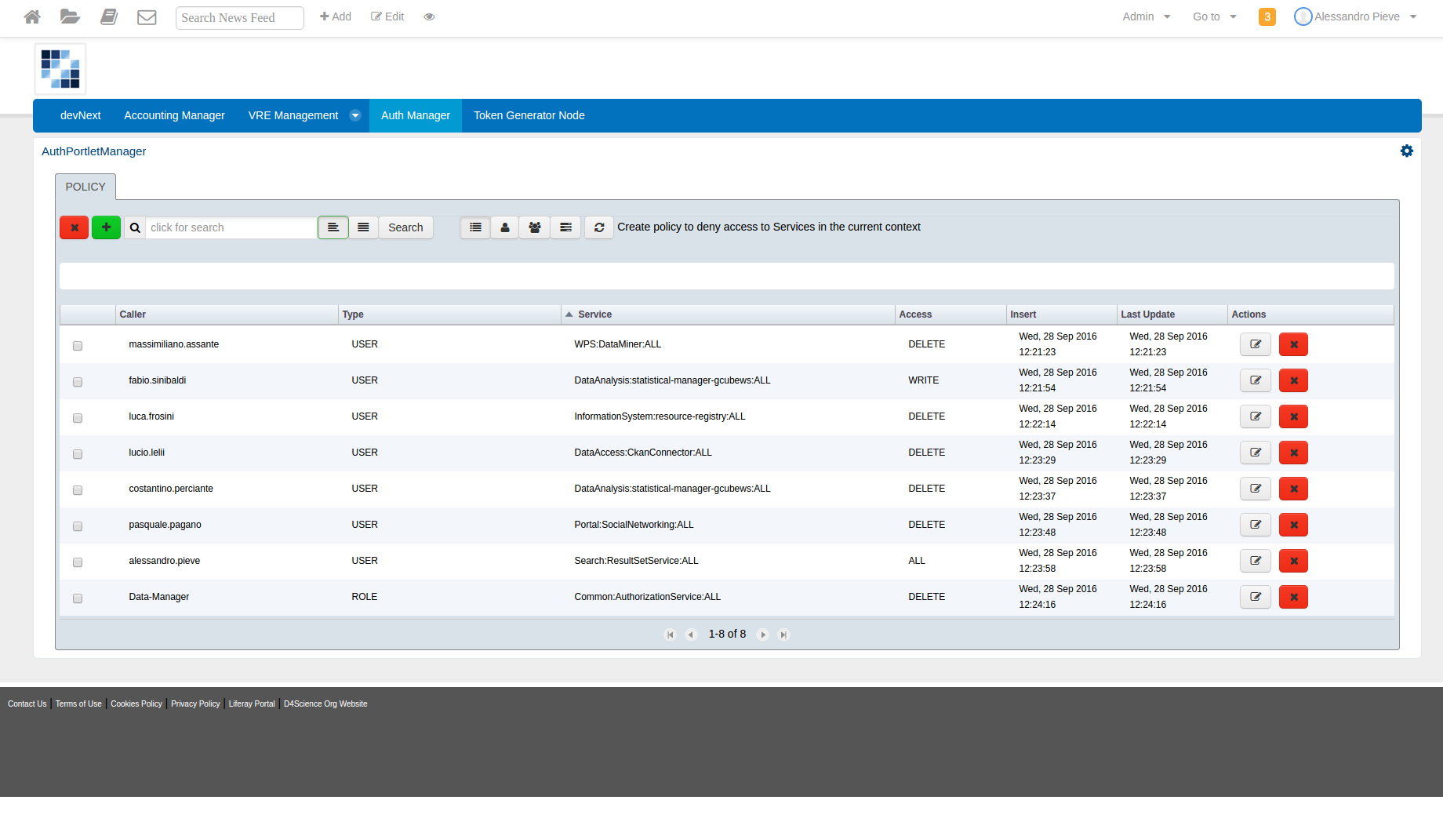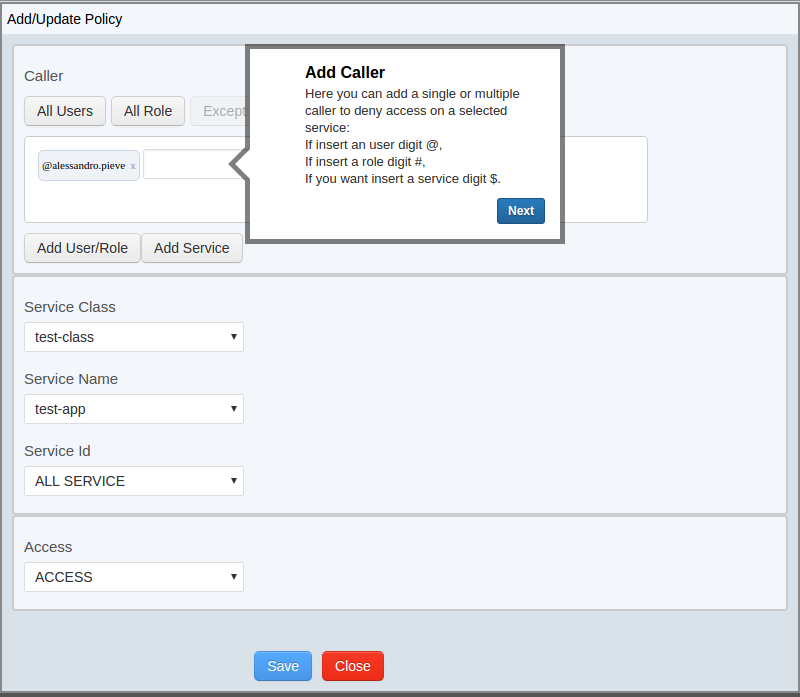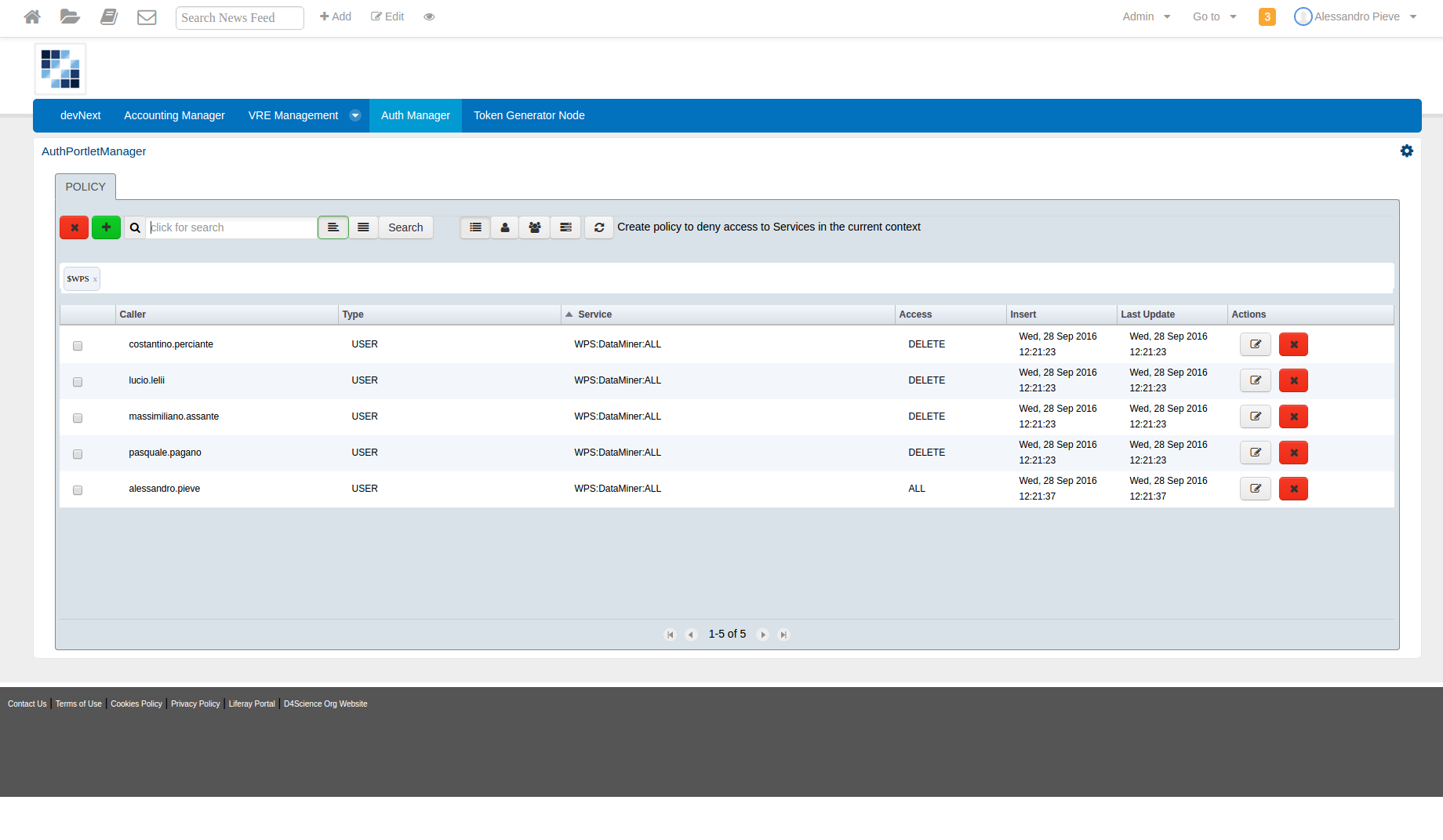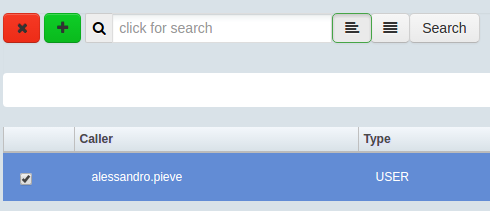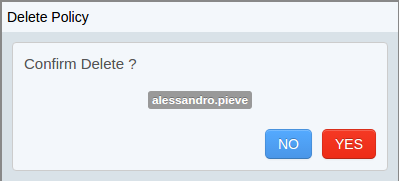Difference between revisions of "Auth Portlet"
(→Introduction) |
(→Introduction) |
||
| Line 15: | Line 15: | ||
#Service | #Service | ||
#Access | #Access | ||
| − | |||
---- | ---- | ||
| + | |||
| Line 32: | Line 32: | ||
*Delete | *Delete | ||
*Execute | *Execute | ||
| − | + | *Write | |
==Insert a Policy== | ==Insert a Policy== | ||
Revision as of 20:56, 4 October 2016
Introduction
With this portlet it’s possible to create a policy to deny access to services in the current context.
Below it is shown the overall layout of the Auth Portlet
Every policy is consisting of:
- one or more Caller
- Service
- Access
The caller can be an User, a Role or a Service and you can insert one or more callers for each policy.
(The insertion of a policy with more callers results as more policy).
The service is specified as service class, service name and service id.
The access that we want to deny can be:
- All
- Access
- Delete
- Execute
- Write
Insert a Policy
Search a Policy
It Is possible search, filter and group by all policy.
If we want to search a caller, we can digit @ before inserting a name of the caller.
If we want to search a service, we can digit $ before inserting a name of the service.
And finally if we want to search an access, we can digit * before inserting a type of an access.
The filter can be incremental.
Over the filter we can organize a policy in caller type, for example user, role and service
Delete a Policy
It’s possible to delete one or more policies simply clicking on the delete button.
